
Resolution: Eat More Veggies
Author: be well™ with Big Y® Registered Dietitian Team
There are so many things you can do with vegetables in the kitchen. They come in a variety of flavors, textures and colors. The culinary possibilities are endless, yet so many of us fall short in eating enough vegetables on a regular basis. In fact, the most recent Dietary Guidelines for Americans cites that 90% of Americans miss meeting daily recommendations.1
If you’re looking for a change that will pay dividends for years to come, look no further. Upping your veggie intake is the perfect behavior to resolve to change this year.
Why Vegetables Are So Important for Health.
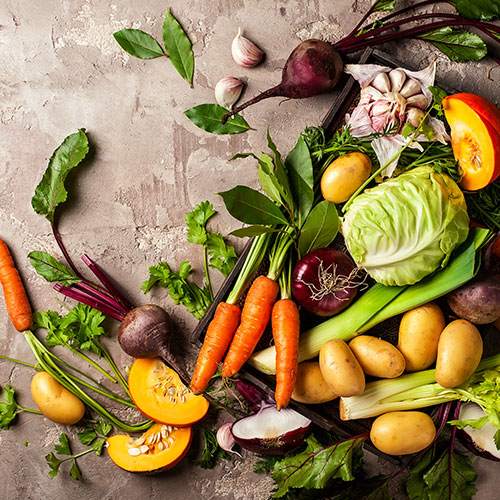
The proof is in the research. Individuals who eat more vegetables throughout the course of their lifetime live longer and have a better quality of life. For example, higher intakes of vegetables are associated with lower risk for heart disease, respiratory disease and obesity.2,3
The reasoning behind the mighty-power of vegetables can’t be narrowed down to just one thing. They’re low in calories and high in water-content while providing vitamins, minerals, fiber and disease-fighting phytochemicals, like the antioxidant-acting glucosinolates found in cruciferous vegetables such as broccoli.4 Brought together, the matrix of compounds offered by vegetables impacts your health and how you feel.
How Many Vegetables Should You Be Eating?
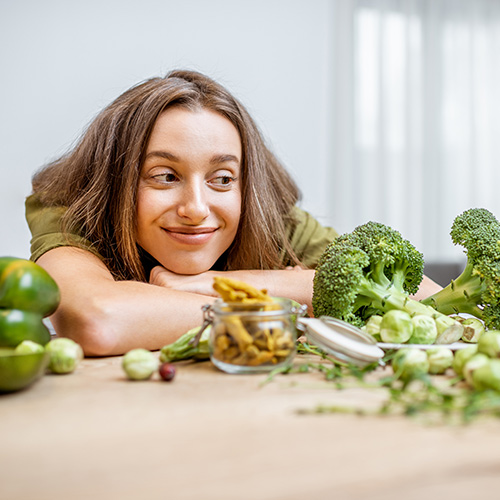
Although recommended servings for each Food Group, including the Vegetable Food Group, are based on calorie needs, the takeaway message for everyone is: eat more veggies. Simply put, Have A Plant® at almost all your eating occasions. Not only will this help ensure you’re getting essential nutrients, vegetables help quench your appetite while displacing higher-calorie foods on your plate.
For example, the Dietary Guidelines recommend 2½ cups each day for individuals following a 2,000-calorie meal plan. The Guidelines encourage Americans to fill these 2½ cups with a variety of options while focusing on dark green, red and orange veggies and beans, peas and lentils first before moving on to starchy and other non-starchy vegetables.
Learn what your daily Vegetable Food Group goals are at MyPlate.gov.
Ways to Have A Plant® Every Time You Eat.
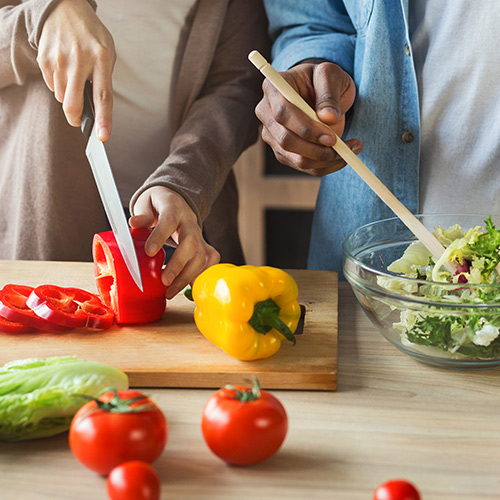
To match the recommendations from the Dietary Guidelines, the best practice is to look down at your plate, or bowl, and see if you have color. No color? It’s time to add a vegetable. Regardless if you’re eating a main meal or snacking, veggies offer the perfect pairing.
How to Add More Veggies to Meals.
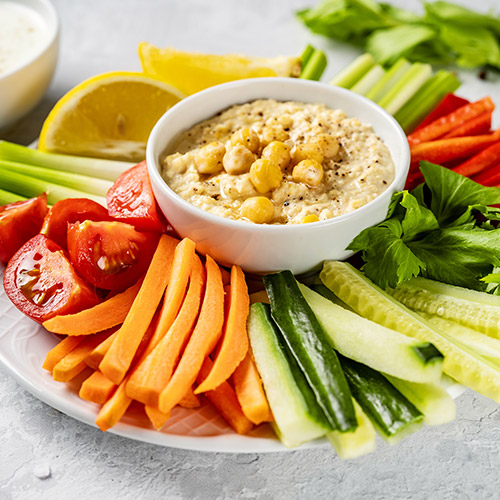
While keeping the color and bean priorities of the Dietary Guidelines in mind, here are a few ways to include more flavor, color and texture to meals thanks to vegetables:
Breakfast
- Add life to scrambled eggs with mushrooms and frozen spinach.
- Pop snack-size tomatoes in a to-go container for a sweet addition to your morning commute.
- Top oatmeal with a dollop of mashed butternut squash or canned pumpkin.
- Roll out the door with a breakfast burrito filled with potatoes, scallions and refried beans.
Lunch
- Make your lunch a Big Salad full of field greens, Bok Choy, carrots, shredded purple cabbage, canned corn, canned black-eyed peas and cooked quinoa.
- Crunch on red bell pepper slices added to the side of your sandwich in lieu of potato chips.
- Warm up with a bowl of soup loaded with cabbage, stewed tomatoes, chopped sweet potato, canned pinto beans and sautéed onions.
Dinner
- Get in the habit of starting with a small salad offering an array of colors like baby kale, canned red beets, orange bell pepper rings and white cauliflower florets.
- Offer a crudité plate during meal prep time to feed hungry tummies. Include a bean dip with family favorites like broccoli florets, cucumbers, baby carrots and cherry tomatoes.
- Include a veggie side dish with dinner, always. Whether it’s frozen broccoli quickly sautéed with garlic and a squeeze of lemon, roasted asparagus or mashed turnips, make veggies a priority just as much as the protein or grain you choose.
Make Snacking on Veggies a Snap.
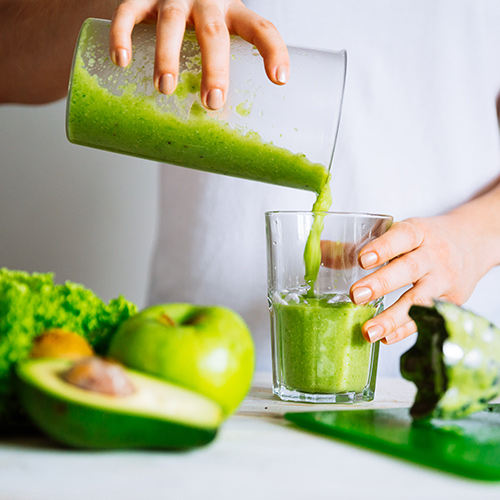
Eating snacks between meals can help maintain your energy, mental focus and curb overeating later in the day.5 Making vegetables a part of your snacking regimen is a great way to add more flavor and nutrition to your in-between-meal eating occasions. Here’s how to add more vegetables to snack time:
- Opt for a small veggie-based smoothie made with frozen kale or spinach.
- Like dipping in salad dressing? Pair veggies with Greek-yogurt dip like tzatziki for less fat and more protein.
- Tiny versions of meal options make great snacks. For example, a small mug of lentil soup, half a small bean burrito or single-serve sized bean dip with a side of baby carrots, green bell pepper slices and grape tomatoes are a simple option requiring no additional creativity (or new foods!).
- Who said baked beans are just for camping? Pack yourself a small serving (~ 1/2 cup) to warm up to curb the mid-afternoon energy slump.
1 U.S. Department of Health and Human Services and U.S. Department of Agriculture. 2015–2020 Dietary Guidelines for Americans. 8th Edition. December 2015. Available at: http://health.gov/dietaryguidelines/2015/guidelines/.
2 Wang DD, Li Y, Bhupathiraju SN, et al. Fruit and vegetable intake and mortality: results from 2 prospective cohort studies of US men and women and a meta-analysis of 26 cohort studies. Circulation. 2021;143(17):1642-1654. https://www.ahajournals.org/doi/10.1161/CIRCULATIONAHA.120.048996.
3 Dharmayani PNA, Juergens M, Allman-Farinelli M, Mihrshahi S. Association between fruit and vegetable consumption and depression symptoms in young people and adults aged 15-45: a systematic review of cohort studies. Int J Environ Res Public Health. 2021;18(2):780. https://doi.org/10.3390/ijerph18020780.
4 Ağagündüz D, Şahin TÖ, Yılmaz B, et al. Cruciferous vegetables and their bioactive metabolites: from prevention to novel therapies of colorectal cancer. Evid Based Complement Alternat Med. 2022;2022:1534083. https://doi.org/10.1155/2022/1534083.
5 Hess JM, Jonnalagadda SS, Slavin JL. What is a snack, why do we snack, and how can we choose better snacks? A review of the definitions of snacking, motivations to snack, contributions to dietary intake, and recommendations for improvement. Advances in Nutrition. 2016 May;7(3):466-75. https://doi.org/10.3945/an.115.009571.
Published 1/16/2023


